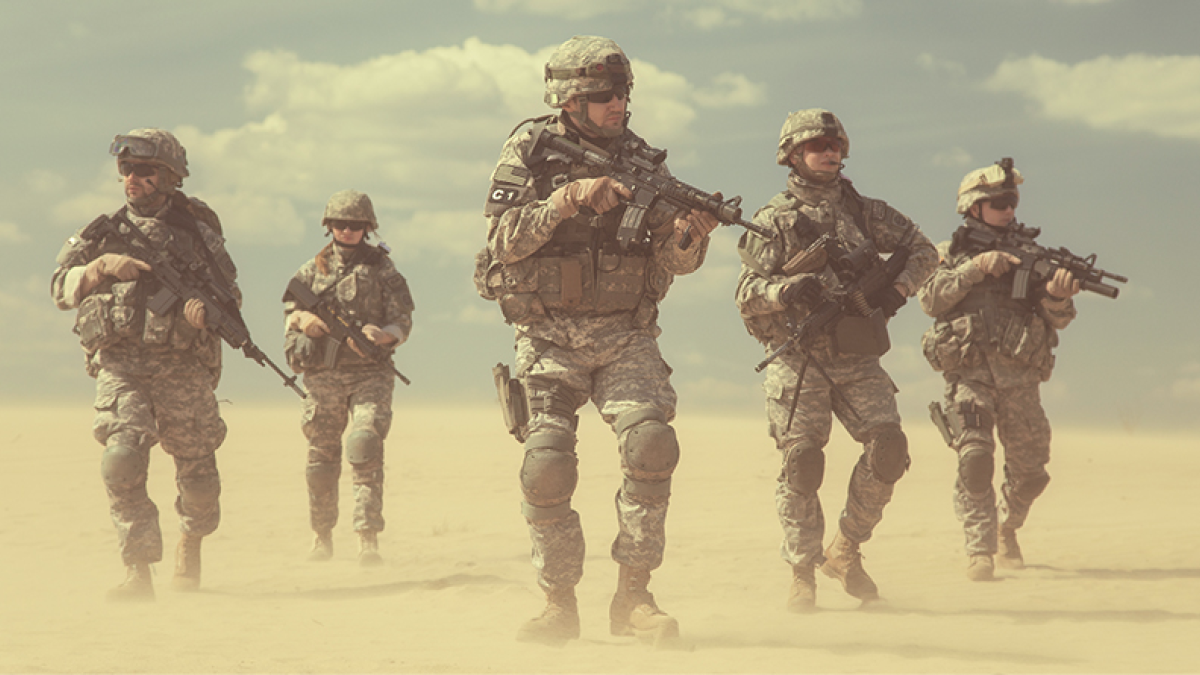Scientists find solution to Gulf War illness in FDA-approved antiviral drugs

Gulf War illness has plagued more than 200,000 Persian Gulf veterans over the past three decades.
A team of scientists, including Efrem Lim, a virologist at the Arizona State University Biodesign Center for Fundamental and Applied Microbiomics and assistant professor at the School of Life Sciences, has shown that adjusting GI tract viruses by repurposing existing FDA-approved antiviral drugs offers a route for effective treatment for Gulf War illness (GWI) and its myriad of symptoms. Their findings were published in the journal Viruses.
“Viruses in the human microbiome have often been ignored,” said Lim, who led the ASU Biodesign Institute team. “We are now starting to learn about the role that the virome plays in our health and disease.” Lim’s laboratory was instrumental in unravelling the virome sequences that formed an integral part of the study.
Lim notes that the new research was performed in an established mouse model of GWI but holds promise for treating Gulf War veterans. “Many cellular and immunological hallmarks of GWI in the intestine and brain were reversed by altering the gut virome with antivirals,” Lim said.
In the 25 years since Desert Storm, Gulf War illness has plagued more than 200,000 Persian Gulf veterans. GWI manifests in a variety of symptoms, including gastrointestinal disturbances, chronic fatigue, widespread pain, chronic headaches, respiratory/sleep problems, neurological problems in memory and learning and other medically unexplained conditions. Existing treatments have been unreliable.
The study was led by Saurabh Chatterjee, environmental health sciences assistant professor at the University of South Carolina’s Arnold School of Public Health. Previously, UofSC researchers had determined that chemical exposure from the Gulf War altered the balance between the viruses and bacteria that naturally occur in the human GI tract, resulting in Gulf War illness.
“Our own viruses interact with bacteria in the gut to maintain a healthy body and mind,” Chatterjee said. “If we can tweak our own host viruses and their interactions with gut bacteria, then we can treat the disease symptoms of Gulf War illness. With our most recent research, we have shown that antiviral drugs that are already in use can be a great starting point for curing the disease and helping thousands of veterans improve their quality of life.”
Previous research had established the link between military deployment during the 1990–91 Persian Gulf War and numerous chronic health symptoms and disorders. Even today, GWI affects 25% to 33% of the 700,000 United States veterans who served in the first Gulf War. Soldiers deployed in subsequent wars have also reported similar immune system or neurological disorders. The chronic persistence and/or worsening of these individuals’ symptoms has proven challenging for both patients and clinicians to fully understand and manage.
Although the exact cause of GWI is unknown, recent research has found an association between environmental exposures in the Gulf War theater and symptoms presented by sufferers. During the war, veterans were exposed to several chemicals including sarin nerve gas, pyridostigmine bromide (PB) anti-nerve gas pills, insecticides and insect repellents.
By utilizing existing antiviral drugs for treatment, clinicians can begin testing these FDA-approved medications in patient cohorts at an accelerated pace compared to the lengthy timeline associated with traditional pharmaceutical drug trials. This novel approach (i.e., restoring the balance between viruses and bacteria in the GI tract in order to improve symptoms throughout the body) also offers hope to the general population, who may suffer from GI disturbances, such as irritable bowel syndrome, or neurological problems, such as learning or memory deficits.
*Additional co-authors include Ratanesh K. Seth, Rabia Maqsood, Ayan Mondal, Dipro Bose, Diana Kimono, LaRinda A. Holland, Patricia Janulewicz Lloyd, Nancy Klimas, Ronnie D. Horner, Kimberly Sullivan, Efrem S. Lim.
Lim’s laboratory was instrumental in unravelling the virome sequences that formed an integral part of the study.
Funding for this project was provided by DoD-IIRFA grant: W81XWH1810374 and VA merit award I01 CX001923-01 to Saurabh Chatterjee; W81XWH-16-1-0556 to Stephen Lasley; W81XWH-13-2-0072 to Kim Sullivan; R00DK107923 to Efrem Lim.
Written by Erin Bluvas, University of South Carolina
Edited by Dianne Price, Biodesign Institute
More Science and technology

ASU planetary scientist to be inducted into the National Academy of Sciences
The National Academy of Sciences is inducting School of Earth and Space Exploration Director Meenakshi Wadhwa into the 2023 class…

Unlocking the potential of AI for homeland security
“Can we do what we're doing now cheaper, more efficiently, more effectively?” Adam Cox, director in the Office of Strategy and…

SpaceHACK highlights student solutions to environmental challenges, digital divide
By Adrianna Nine About 250 students from around the world convened online and at Arizona State University on March 22 for the…